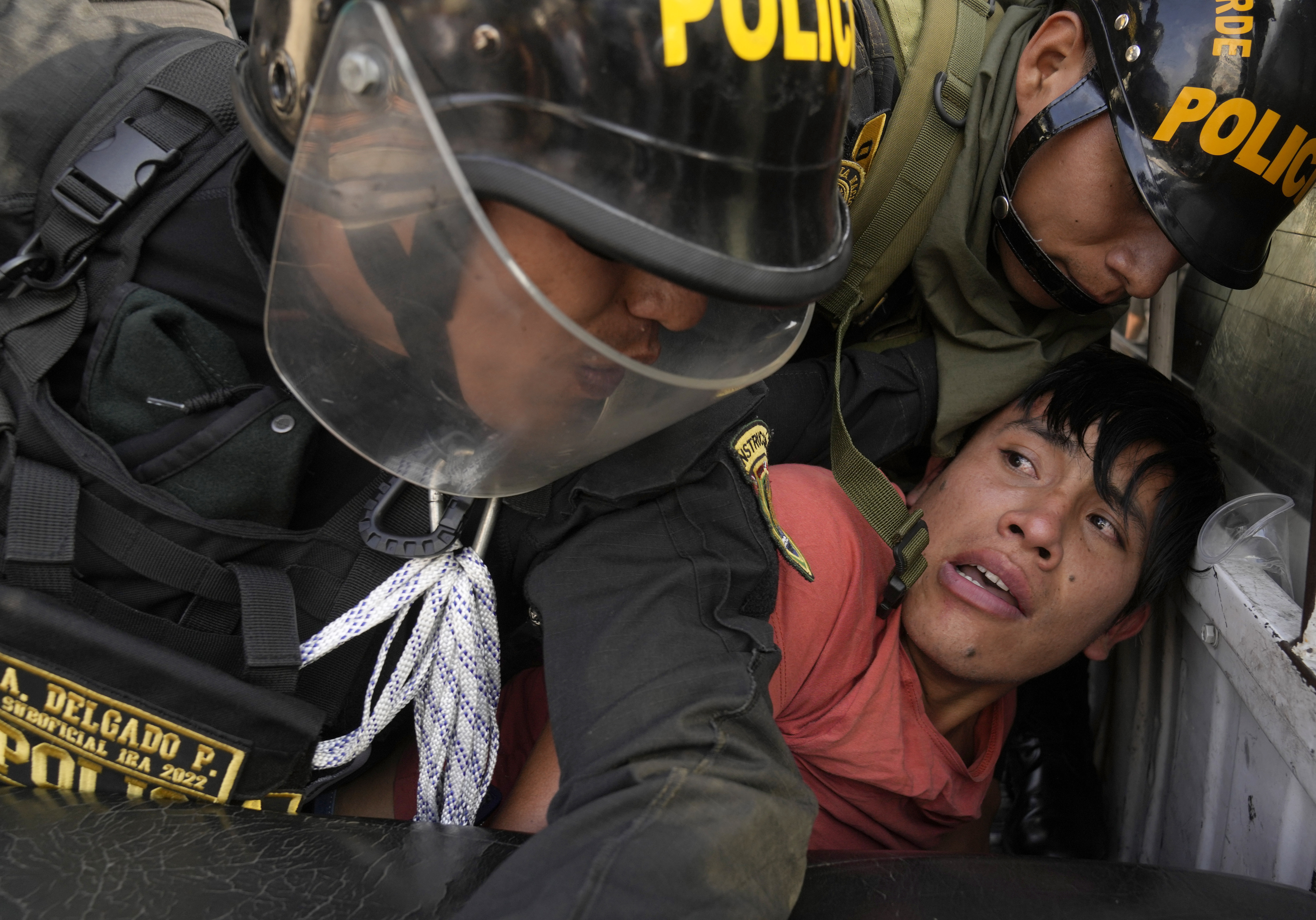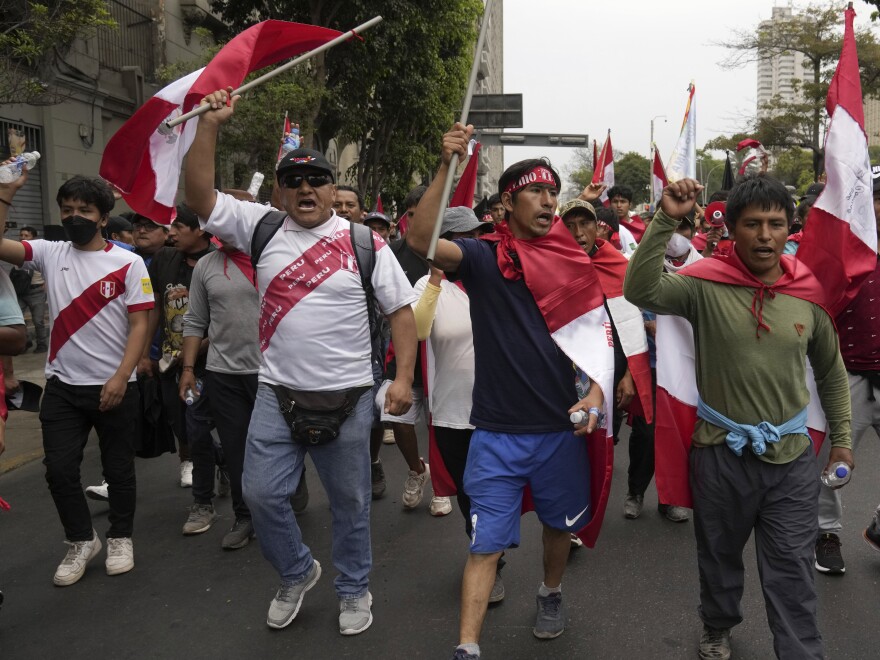Story by NEWS WIRES • 5h ago
Embattled Peru President Dina Boluarte on Friday urged Congress to advance elections slated for April 2024 to December 2023 as protests against her leadership that have left dozens dead continue.

Peru's president asks Congress to bring vote forward amid deadly protests© Angela Ponce, Reuters
Peru has been embroiled in a political crisis with near-daily protests since December 7 when former president Pedro Castillo was arrested after attempting to dissolve parliament and rule by decree.
His supporters are demanding that Boluarte resign and call fresh elections.
Boluarte said she had asked her Cabinet to support the bill before it is taken up by Congress.
"We put this bill to advance elections to December 2023 to the ministers for consideration," said Boluarte during a ceremony at a military airport in Lima.
Related video: Peru's bitter divide: How far will anti-Boluarte protests go?
(France 24) Duration 43:59 View on Watch
Congress previously voted on December 21 in favor of a Boluarte bill to bring forward elections from 2026 to 2024.
"Congress voted once and we are waiting for them to vote again. However, the protests continue. There are more roadblocks and violence," added Boluarte, describing the current political crisis as a "quagmire."
But protesters are demanding immediate elections, as well as Boluarte's removal, the dissolution of parliament and a new constitution.
In seven weeks of protests since Castillo's arrest, at least 46 people have been killed in clashes between security forces and protesters.
Some of the worst violence and highest death tolls have come when protesters tried to storm airports in the country's south.
Those southern regions with large indigenous populations have been the epicenter of the protest movement that has affected Peru's vital tourism industry.
As well as blocking dozens of roads and forcing the temporary closure of several airports, protesters have placed rocks on the train tracks that act as the only transport access to Machu Picchu, the former Inca citadel and jewel of Peruvian tourism.
That resulted in hundreds of tourists being left stranded at the archeological ruins and many of them were evacuated by helicopter.
(AFP)
Peru’s president urges Congress to bring forward general elections amid protests
This article is more than 1 month old
Dina Boluarte assumed the presidency after Pedro Castillo tried to illegally dissolve Congress and was arrested
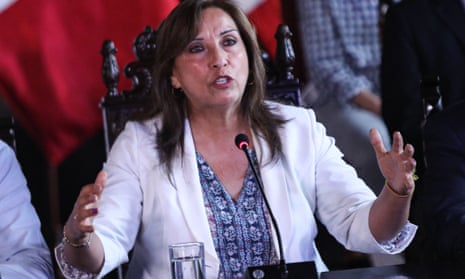
Reuters in Lima
Sat 17 Dec 2022
The Peruvian president, Dina Boluarte, who has said she is leading a transitional government, urged the country’s Congress to pass a proposal to bring forward general elections in a news conference from the presidential palace on Saturday.
Boluarte, formerly Peru’s vice-president, assumed the presidency earlier this month after ex-president Pedro Castillo tried to illegally dissolve Congress and was arrested.
Since then, protests have broken out across the country, and at least 17 people have been killed. Another five have died as an indirect consequence of the protests, according to authorities.
Boluarte also countered protesters asking for her to step down, saying “that does not solve the problem” and that she had done her part by sending the bill to Congress.
On Friday, Peru’s Congress rejected the proposed constitutional reform to move elections forward to December 2023. Some members of Congress have called for the legislature to reconsider the proposal.
“I demand that the vote to bring elections up be reconsidered,” Boluarte said, criticising Congress members who had previously abstained from voting.

What is happening in Peru and why are people so angry?
Protests since the arrest of the former president Castillo, who is in pre-trial detention while facing charges of rebellion and conspiracy, have crippled Peru’s transport system, shuttering airports and blocking highways.
On Wednesday, Boluarte’s government announced a state of emergency, granting police special powers and limiting citizens’ rights, including the right to assembly.
Protesters have also blockaded Peru’s borders, leaving tourists stranded and strangling trade.
“We want the immediate closure of Congress; we want the resignation of Dina Boluarte,” said Rene Mendoza, a protester at the border with Bolivia. “Today, the Peruvian people are in mourning … The whole of Peru is in a struggle.”
January 24, 2023
Agence France-Presse
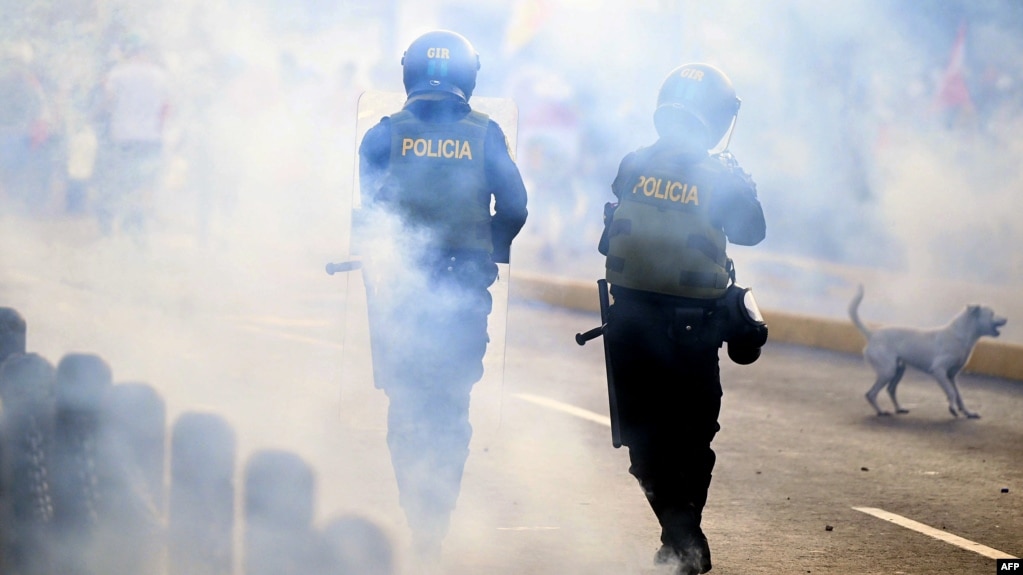
LIMA, PERU —
Peru's President Dina Boluarte called Tuesday for a "national truce" to end weeks of nationwide unrest as protesters again clashed with police in the capital to press for her resignation and fresh elections.
Thousands of Peruvians from Andean regions, many in traditional dress, marched in central Lima chanting "Dina assassin," blaming her for the deaths of 46 people, mainly demonstrators, since protests broke out last month.
Violent clashes erupted in central Lima Tuesday evening as protesters threw stones and police responded with tear gas, according to an AFP journalist on the scene.

Many Peruvians remain angry at the December 7 ouster of then-president Pedro Castillo, who was arrested after attempting to dissolve Congress and rule by decree.
Boluarte, the vice president under Castillo, immediately assumed power.

SEE ALSO:
Families of Detained Protesters in Peru Clamor for News
Protests quickly broke out, largely fueled by anger in poor rural regions in the south where inhabitants – mainly Indigenous – felt that Castillo, who has Indigenous roots himself, represented their interests rather than those of the Lima elite.
Demonstrators have kept up weeks of protests and roadblocks and are also demanding the dissolution of Congress and the rewriting of the constitution.
"I call on my dear country to a national truce to allow for the establishment of dialogue, to fix the agenda for each region and develop our towns," Boluarte said in a news conference with foreign media. "I will not tire from calling for dialogue, peace and unity."

SEE ALSO:
Peru Closes Machu Picchu Amid Deadly Protests in Lima
A visibly emotional Boluarte apologized several times for those killed in the protests but ruled out resigning.
"I will go once we have called a general election ... I have no intention of remaining in power."
Under Peru's current constitution, the president cannot run for immediate reelection.
'We don't believe her'
Boluarte said she was sure Congress would agree in February to advance elections, currently scheduled for April 2024.
Asked about her possible resignation, Boluarte scoffed at the idea that it would "solve the crisis and the violence."
"We don't believe her words anymore," said protester Rosa Soncco, a 37-year-old hailing from the mountain town of Acomayo, in the southern Cusco region.
"We will stay here until the end, until she leaves," she said.
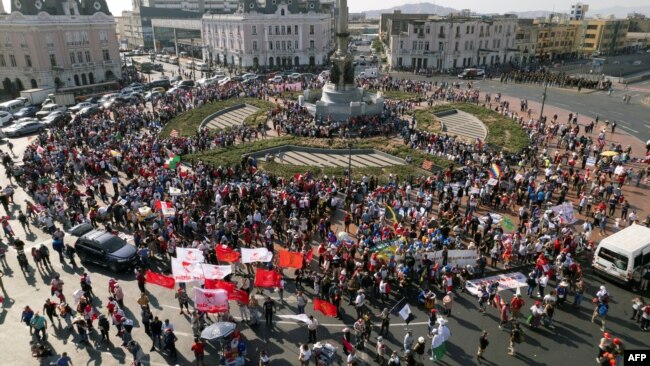
On Tuesday, police fired tear gas to repel demonstrators heading in the direction of Congress, AFP journalists saw. At least one person was bleeding from their head and an injured woman was heard screaming near an ambulance.
One protester carried a big doll with a bloody knife in its hand and a picture of Boluarte attached.
Boluarte is due to have a video meeting with the Organization of American States (OAS) on Wednesday to discuss the situation in Peru.
Her government has come under fire from rights groups over alleged repression of protests and the disproportionate use of force by security forces.
Castillo 'no victim'
Boluarte has called a state of emergency in Peru, allowing the army to assist police in maintaining order.

"I will appear before the OAS to tell the truth. The Peruvian government and especially Dina Boluarte have nothing to hide," she said.
Boluarte claims some of the protesters were killed by ammunition that is not used by the police.
The president said the deaths "hurt me, as a woman, a mother and a daughter."
She also hit out at her predecessor Castillo, saying he sparked unrest by trying to broaden his powers in a bid to avoid an impeachment vote and stave off corruption investigations.
"It suited him to stage a coup d'etat so he could play the victim and mobilize all this paramilitary apparatus so as not to answer before the public prosecutor for the acts of corruption that he is accused of," said Boluarte.
"There is no victim here, Mr. Castillo. There is a bleeding country because of your irresponsibility."
Boluarte is from the same left-wing party as Castillo and was his running mate during his successful 2021 election campaign. She served as his vice president before replacing him.







































